Dana Porter Library, first floor
University of Waterloo Library
Waterloo, Ontario N2L 3G1
519-888-4567 x42619 or x42445
Hello everyone, my name is Taylor and I am the newest co-op student within the Special Collections & Archives (SCA) department. I am a Fine Arts major with a passion for photography. Luckily for me, working in SCA, I was able to combine my passion with my job. Unfortunately, the length of my position within the department was cut short due to the COVID-19 pandemic. However, the time that I was able to spend within the department was a great experience, so I thought I’d share some of the different types of photographs I encountered.
Daguerreotypes
One of the earliest types of photographs SCA has is the daguerreotype. The daguerreotype was invented in 1839 by Louis Daguerre and was the first commercially available type of photograph. They were quite expensive, making them rare in comparison to other types. The daguerreotype is a direct photograph produced on a fragile, silver coated copper plate. After the photograph has been created, the surface of a daguerreotype appears mirror-like and can be seen as a positive or negative image. Considering how fragile they are, daguerreotypes were most commonly displayed behind glass in a framed case that typically incorporates intricate gold detailing. This creates a luxurious presentation while at the same time giving it a more defining characteristic of the daguerreotype photograph.
The daguerreotype in SCA is an unidentified portrait from the Breithaupt Hewetson Clark collection.
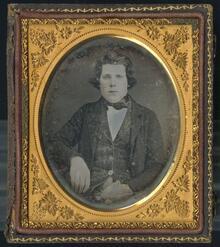
Cyanotypes
Another type of photograph is the cyanotype. This photographic process was invented in 1842 by Sir John Herschel. Cyan refers to the greenish blue colour; making this type quite easy to recognize considering the distinguishing feature of its vivid and matte blue/cyan hue. This type of photograph was generally used for industrial prints, as it is also referred to as the blueprint process. Although it was simpler and more affordable, it wasn’t the most popular type of photograph as the monochrome blue failed to interest most photographers at the time.
This cyanotype is from the Rieder and Anthes family fonds which displays the construction of the Berlin Rubber Manufacturing Company Factory.
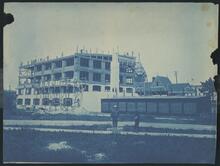
Ambrotypes
Shortly after, the ambrotype came along which was patented in 1854 by James Ambrose Cutting. This type of photograph was more affordable, but also a less detailed alternative in comparison to the daguerreotype. The ambrotype photograph is a negative image created on a glass plate, however the negative produced is a lighter tone. The glass plate is then placed over a black background which makes the photograph then appear as a positive image. This layering effect with the added depth can give the photograph a more three-dimensional effect. Although the protective framed casing can be similar in appearance to that of a daguerreotype, the layered glass negative is distinguishable from the mirror-like surfaced plate of a daguerreotype.
This ambrotype is an unidentified portrait from the Breithaupt Hewetson Clark collection.
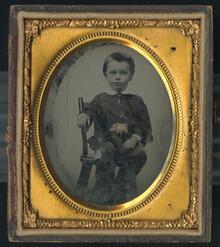
Tintypes
1856 was the year tintypes were introduced. Tintypes are photographs created on emulsified iron plates with the very distinguishing feature of being magnetic. Tintypes are typically found loose, although some have small gold frames or paper mounts to display them. I have come across several tintypes, all of which are unique. Included among these were pages of tiny tintypes measuring approximately two by two centimeters. I found this fascinating since the quality and amount of detail was impeccable considering the size.
These tintypes are from the Photograph collection.
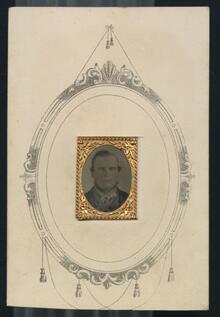
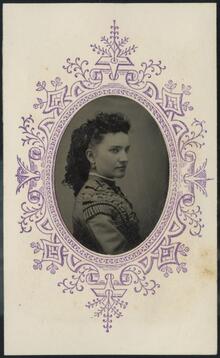
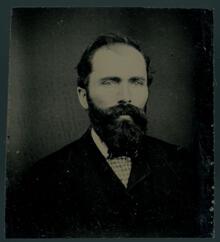
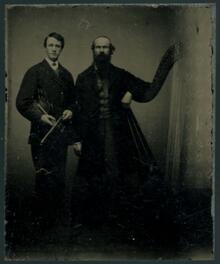
These are just a few of the various types of photographs created throughout the years. Stay tuned for the continuation in part 2!
(Continue to Types of Photographs - Part 2)
References
https://www.parisphoto.com/en/Glossary/ [This link broken as of 2020-06-12]
https://www.alternativephotography.com/cyanotype-history-john-herschels-invention/
http://www.graphicsatlas.org/identification/
http://www.daguerreobase.org/en/knowledge-base/what-is-a-daguerreotype




